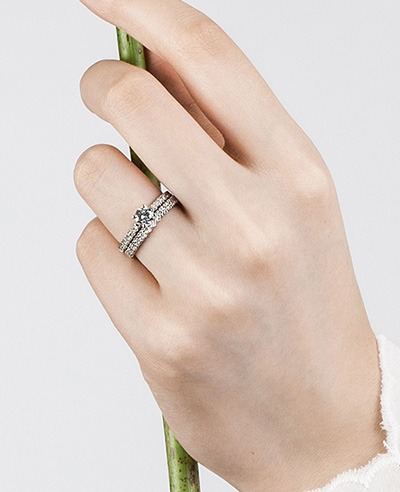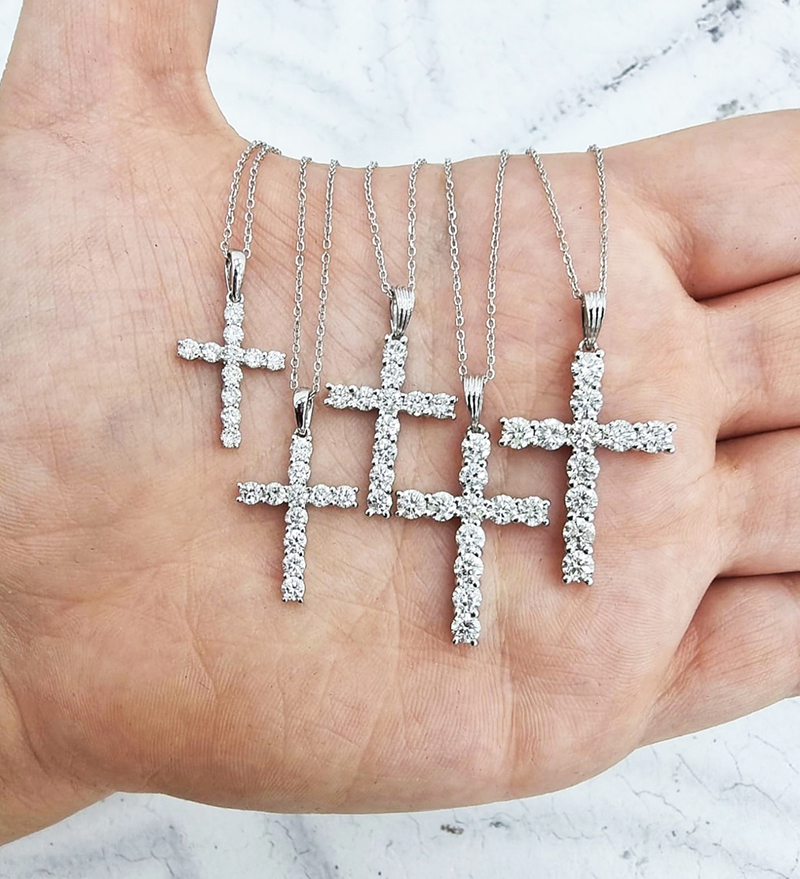Sapphire Splendour: Exploring the Captivating World of Sapphire Jewellery
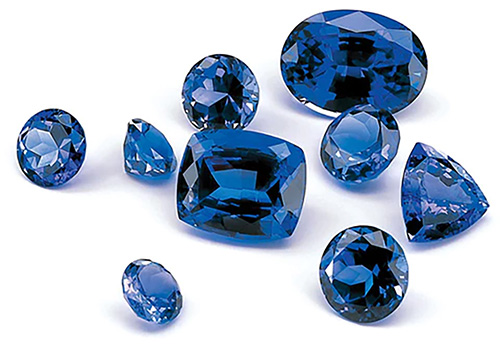
Sapphires, with their enchanting allure and timeless beauty, have captivated humanity for centuries. Renowned for their stunning blue hue, sapphires have become synonymous with elegance, sophistication, and opulence in the world of jewellery. These precious gemstones, cherished for their unique colour and remarkable durability, have carved a special place in the hearts of jewellery enthusiasts and gemstone connoisseurs alike.
Whether adorning an engagement ring, pendant, bracelet, or pair of earrings, sapphire jewellery never fails to exude a sense of timeless elegance and sophistication. These magnificent gemstones continue to enchant jewellery lovers around the world, serving as a testament to their enduring popularity and everlasting charm.
What is Sapphire?
Let’s start with the basics, what exactly is sapphire? Sapphire gemstones belong to the family of minerals know as Corundum, a mineral consisting of aluminium oxide. One of the naturally occurring crystalline forms of aluminium oxide, with the other form being bauxite. Corundum is renowned for its exceptional hardness, ranking 9 on the Mohs scale, just below diamond. This hardness makes corundum one of the hardest minerals on Earth.
Corundum is most commonly recognised for its gemstone varieties, which include sapphire and ruby. While both sapphire and ruby are composed of corundum, their distinct colours arise from trace elements within the crystal structure. The red variety of corundum is known as ruby, while all other colours are referred to as sapphires. Blue sapphires are the most well-known and highly prized, but corundum can occur in many shades.
Shades of Enchantment
One of the most captivating features of sapphires is their mesmerising blue colour. Ranging from deep midnight blue to vibrant cornflower blue, each sapphire possesses its own unique shade. This captivating hue has been the source of inspiration for poets, artists, and jewellery designers, who have sought to capture the essence of sapphire's timeless beauty in their creations.
Sapphire jewellery offers a diverse range of options beyond the classic blue stones. Sapphires can be found in a variety of captivating colours, including elegant pinks, vibrant yellows, and rich purples. This incredible array of hues allows for endless creativity and personalisation when it comes to designing unique and breathtaking jewellery pieces.
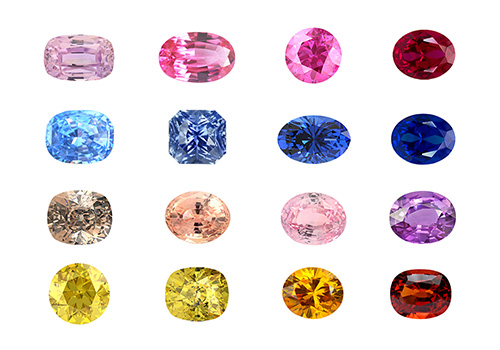

Hardness only second to diamond
Sapphire is renowned for its exceptional hardness, which is one of its defining characteristics. On the Mohs scale of mineral hardness, sapphire ranks at a 9 out of 10, making it the second hardest naturally occurring substance after diamond.With its hardness, sapphire is highly resistant to scratches and abrasions, making it an excellent choice for jewellery that is meant to withstand everyday wear and tear. This durability ensures that sapphire jewellery retains its beauty and lustre over time, making it a desirable gemstone for both everyday pieces and special occasions.
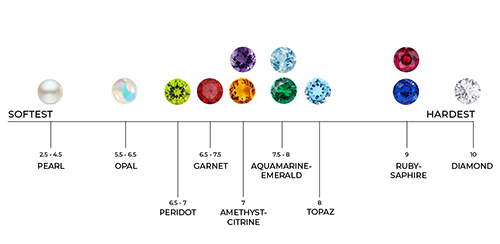

Sapphire Rings for Special Occasions
Sapphire jewellery hold a long-standing tradition of being cherished gifts for special occasions, symbolising love, commitment, and celebration. Their significance as birthstones and their prominent role in engagement and wedding rings further accentuate their allure and timeless appeal.
As birthstones, sapphires are associated with the month of September. The deep blue sapphire is believed to represent loyalty, wisdom, and nobility, making it a meaningful choice for those born in this month. Gifting sapphire is a way to honour their unique qualities and celebrate their special day with a gemstone that carries deep symbolism.
Engagement and wedding rings adorned with sapphire gems have gained popularity in recent years, offering a unique alternative to traditional diamond rings. The allure of sapphire engagement rings lies not only in their captivating beauty but also in the depth of symbolism they hold. The enduring nature of sapphires, coupled with their association with loyalty and fidelity, makes them a perfect choice for expressing a lifetime commitment and the strength of love.
Sapphire jewellery is also commonly chosen for wedding bands. The use of sapphires in wedding rings adds a touch of colour, sophistication, and individuality to the symbol of eternal love. Whether used as accent stones or as the focal point, sapphire wedding bands can be worn to reflect personal style and taste, creating a truly unique and meaningful piece of jewellery.
In addition to engagement and wedding jewellery, sapphires are cherished gifts for other special occasions as well. Their deep blue hues evoke a sense of elegance and refinement, making them a beloved choice for anniversary gifts, milestone birthdays, or to commemorate achievements and accomplishments.
Whether it's a birthday, an engagement, a wedding, or any other significant moment, sapphire jewellery carries a sense of timelessness, beauty, and sentimental value. As a gift, it symbolises love, loyalty, and the everlasting bond.
Sapphire History & Lore
The allure of sapphire jewellery lies not only in their captivating aesthetic appeal but also in their rich historical and cultural significance. Dating back to ancient civilisations, sapphires have been treasured for their association with wisdom, nobility, and divine blessings. From the regal courts of ancient Persia to the magnificent crowns of European monarchs, sapphires have adorned the most prestigious jewellery pieces throughout history.
Ancient Beliefs and Mythology
Sapphires have been revered throughout history for their mystical properties and associations with divine powers. In ancient times, people believed that sapphires protected their wearers from harm and bestowed blessings of wisdom, truth, and spiritual enlightenment. The gem was often associated with celestial entities, believed to bring favour from the gods and goddesses.
In Greek mythology, sapphires were linked to the god Apollo, representing his connection to the heavens and his oracle at Delphi. Ancient Persians believed that the Earth rested on a giant sapphire, its reflection giving the sky its blue colour. These beliefs contributed to the reverence and allure of sapphires in various ancient cultures.


Historical Significance
Sapphires hold historical significance in different cultures and eras. Ancient civilisations, such as the Egyptians and the Romans, valued sapphires for their protective properties and regarded them as symbols of truth and loyalty.
In the Middle Ages, sapphires were associated with ecclesiastical power and used to adorn religious artefacts and robes. The gemstones were also believed to possess healing properties and were used in traditional medicinal practices.
Royal Associations
Sapphires have a long history of adorning the crowns, jewellery, and regalia of royalty and nobility. They were highly sought after by monarchs throughout history as symbols of power, prestige, and divine favour. The British Crown Jewels, for example, feature several remarkable sapphires, including the famous St. Edward's Sapphire, set in the Imperial State Crown.
The Blue Sapphire of Louis XIV, known as the "Star of Adam," was a magnificent blue sapphire believed to possess mystical powers. It was treasured by kings and queens and thought to safeguard its wearer from harm.
Princess Diana's iconic sapphire engagement ring, now worn by the Duchess of Cambridge, Kate Middleton, has played a significant role in popularising sapphire engagement rings. This stunning piece showcases the timeless elegance and regal charm of sapphire, further cementing its appeal as an engagement gemstone.
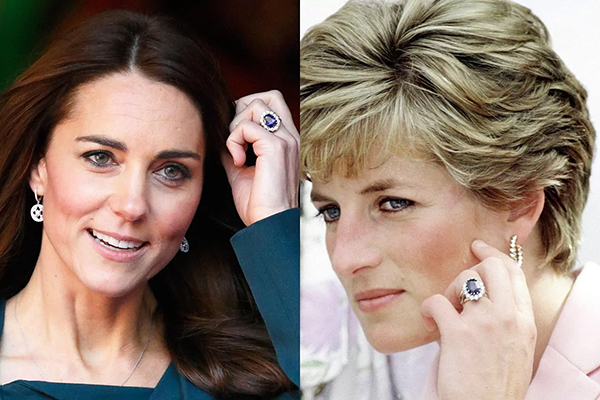

Sapphires in Modern Times
In contemporary society, sapphires continue to be cherished gemstones. They are sought after for their versatility, durability, and vibrant colours. Sapphires are used in a wide range of jewellery designs, from engagement rings to necklaces, bracelets, and earrings, allowing individuals to express their unique style and personality.
Whether it's the captivating lore and mythology, the royal associations, or the historical significance, sapphires possess an enduring allure that transcends time. These precious gems continue to hold a special place in the hearts of jewelry enthusiasts and collectors, carrying with them a legacy of beauty, symbolism, and mystique.
Discovery and Mining
Sapphires are mined in various locations around the world, each offering its own unique characteristics and gemstone qualities. Let's explore some of the key regions and methods of sapphire mining:
Sri Lanka (formerly Ceylon): Sri Lanka is renowned for its rich history of sapphire mining and is known as one of the oldest sources of sapphires. The island nation is famous for producing high-quality sapphires, particularly prized for their exceptional clarity and stunning blue hues. Traditional mining methods such as hand tools and shallow pit mines are often employed in Sri Lanka, with skilled miners carefully extracting gem-bearing gravels and alluvial deposits.
Burma (now Myanmar): Burma has long been associated with some of the world's finest sapphires. Burmese sapphires are highly sought after for their intense royal blue color and excellent transparency. In the mining process, both mechanized and traditional methods are utilized. Mechanized mining involves the use of heavy machinery and equipment to extract sapphire-bearing gravels, while traditional methods involve manual labor, such as panning and digging in riverbeds or alluvial deposits.
Madagascar: Madagascar has become a significant source of sapphires in recent decades. The island is known for its diverse range of sapphire colors, including blues, pinks, yellows, and greens. Mining in Madagascar involves a combination of artisanal methods and small-scale mechanized operations. Miners often sift through river sediments and mine in remote areas, carefully sorting and washing gravels to uncover sapphire deposits.
Australia: Australia is another notable producer of sapphires, with Queensland being the primary source. Sapphires from Australia are known for their rich blue color and high quality. Mining methods in Australia range from small-scale operations using hand tools and sieves to larger mechanized operations involving heavy machinery. Both alluvial and underground mining techniques are employed to extract sapphires from deposits.
Kashmir (India): The Kashmir region of India has historically been famous for its exceptional sapphires, renowned for their mesmerizing velvety blue hue and remarkable clarity. However, mining in Kashmir has significantly decreased over the years, and the region is primarily known for its historical production rather than active mining operations.
In general, sapphires are typically found in secondary deposits, such as riverbeds, alluvial deposits, or weathered rock formations. Miners employ a combination of manual labor, mechanized methods, and exploration techniques to locate and extract sapphire-bearing gravels. After extraction, the rough sapphires undergo sorting, grading, and cutting processes to transform them into the beautiful gemstones used in jewelry.
It's important to note that sustainable and ethical mining practices are gaining importance in the gemstone industry. Efforts are being made to ensure responsible sourcing, fair labor practices, and environmental stewardship in sapphire mining operations worldwide.
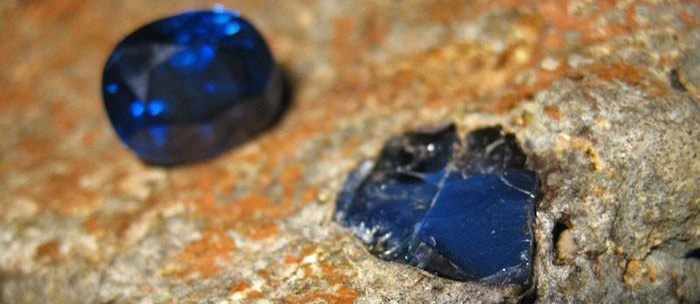

Pros and Cons of Sapphire in Jewellery
Using sapphire in jewellery offers a multitude of advantages, but it's important to consider both the pros and cons. Let's explore them:
Pros of using sapphire in jewellery:
Beauty and Elegance: Sapphires are renowned for their stunning beauty and vibrant colours. From deep blues to vivid pinks and yellows, sapphires add a touch of sophistication and elegance to any piece.
Durability: Sapphire is one of the hardest gemstones, second only to diamonds on the Mohs scale. Its exceptional hardness makes sapphire jewellery highly resistant to scratches and ensures long-lasting durability.
Versatility: Sapphires come in various colours, allowing for a wide range of design possibilities.
Symbolism: Sapphires have long been associated with virtues such as wisdom, loyalty, and nobility. As birthstones and engagement gemstones, they carry special meanings and symbolise love, commitment, and important life milestones.
Rarity and Value: Fine-quality sapphires are relatively rare, especially those with exceptional colour and clarity. This rarity contributes to their value and makes them desirable as investment pieces or heirlooms.
Cons of using sapphire in jewellery:
Price: High-quality sapphires can be expensive, especially those with exceptional colour, clarity, and size. The price of sapphire jewellery can vary significantly based on factors such as carat weight, colour intensity, and overall quality.
Colour and Clarity Variations: While sapphires are appreciated for their colour range, finding stones with consistent colour saturation and clarity can be a challenge. Many sapphires exhibit visible inclusions or uneven colour distribution, impacting their overall appearance. Low cost sapphire can be very dark, appearing black or having a pale appearance lacking hue.
Sensitivity to Impact: Despite sapphire's hardness, it can still be susceptible to damage from sharp impacts or rough handling. Care should be taken to protect sapphire jewellery from potential harm to maintain its longevity and beauty.
Colour Preference: While the blue variety of sapphire is the most famous, personal colour preferences may vary. Some individuals may prefer other gemstones or coloured diamonds over sapphires, depending on their personal taste and style.
Ultimately, the enduring beauty, durability, and symbolic value of sapphires continue to make them a popular choice for exquisite and meaningful jewellery.
How to Care for your Sapphire Gems
Caring for your sapphire jewellery is essential to ensure its long-lasting beauty and durability. Here are some tips on how to properly care for your sapphire jewellery:
Storage: When you're not wearing your sapphire jewellery, store it in a soft pouch or a separate compartment in a jewellery box to prevent scratching or damage from other pieces. Avoid storing sapphires with harder gemstones, such as diamonds, as they can potentially scratch the surface of the sapphire.
Cleaning: Regularly clean your sapphire jewellery to maintain its brilliance. Use a soft, lint-free cloth to gently wipe the surface of the gemstone to remove any dirt or residue. For more thorough cleaning, prepare a solution of warm water and mild dish soap. Soak your sapphire jewellery in the solution for a few minutes, then use a soft brush (like a toothbrush) to gently scrub around the setting and gemstone. Rinse with warm water and pat dry with a clean, soft cloth.
Avoid Chemicals: Keep your sapphire jewellery away from harsh chemicals, including household cleaners, chlorine, and other abrasive substances. Chemicals can damage the gemstone's surface and affect its colour and lustre. Remove your sapphire jewellery before swimming, cleaning, or engaging in activities that involve exposure to chemicals.
Extreme temperatures: This can potentially damage sapphires. Avoid exposing your jewellery to sudden temperature changes, such as boiling water or extreme cold. It's also advisable to remove your sapphire jewellery before engaging in activities such as sauna sessions or using hot tubs.
Protective Care: Be mindful of how you wear your sapphire jewellery to prevent unnecessary wear and tear. Remove your jewellery before engaging in activities that may subject it to impact, such as sports, heavy lifting, or household chores. Sapphires, despite their hardness, can still chip or crack under extreme force.
Professional Maintenance: Periodically have your sapphire jewellery inspected and professionally cleaned by a reputable jeweller. They can check the setting for any signs of wear, ensure the gemstone is secure, and perform any necessary maintenance or repairs.
Avoid Ultrasonic Cleaners: While sapphires are generally durable, certain treatments or fracture-filled sapphires can be vulnerable to ultrasonic cleaners. Consult your jeweller before using ultrasonic cleaning devices to ensure they are safe for your particular sapphire jewellery. Lloyds Sapphires do not feature fracture filling and are generally safe to be cleaned using ultra sonic cleaners.
By following these care guidelines, you can maintain the beauty and integrity of your sapphire jewellery for years to come. Regular cleaning, safe storage, and mindful wear will help your sapphire pieces retain their brilliance and enchanting allure.
Why Choose Lloyds Family Jewellery for your Sapphire Jewellery
If you're in search of exquisite sapphire jewellery of the highest quality, look no further than Lloyds Family Jewellery. With over five decades of experience, we have been dedicated to providing customers with exceptional jewellery since 1969. Our commitment lies in utilising only 100% natural gemstones in all our pieces. Discover our curated collection of beautifully crafted sapphire rings, pendants, and necklaces, each designed with attention to detail and uncompromising quality.
Lloyds stands out for our stellar reputation, built on the foundation of customer satisfaction. Our Google and other review sites, such as Trusted Shops, Review Centre and SiteJabber boast numerous 5-star reviews from delighted customers who commend our exceptional customer service, fine jewellery, and attention to customer service. To ensure a seamless shopping experience, we offer complimentary delivery, luxurious gift packaging, and a 30-day returns policy for your peace of mind.

